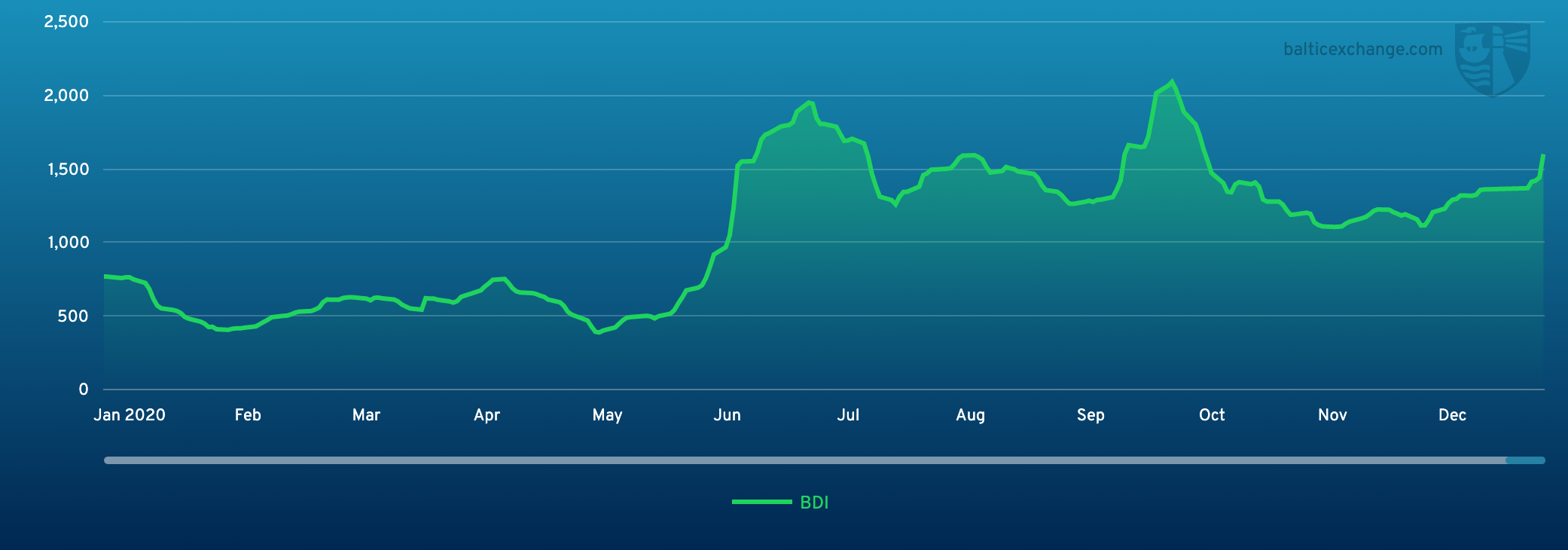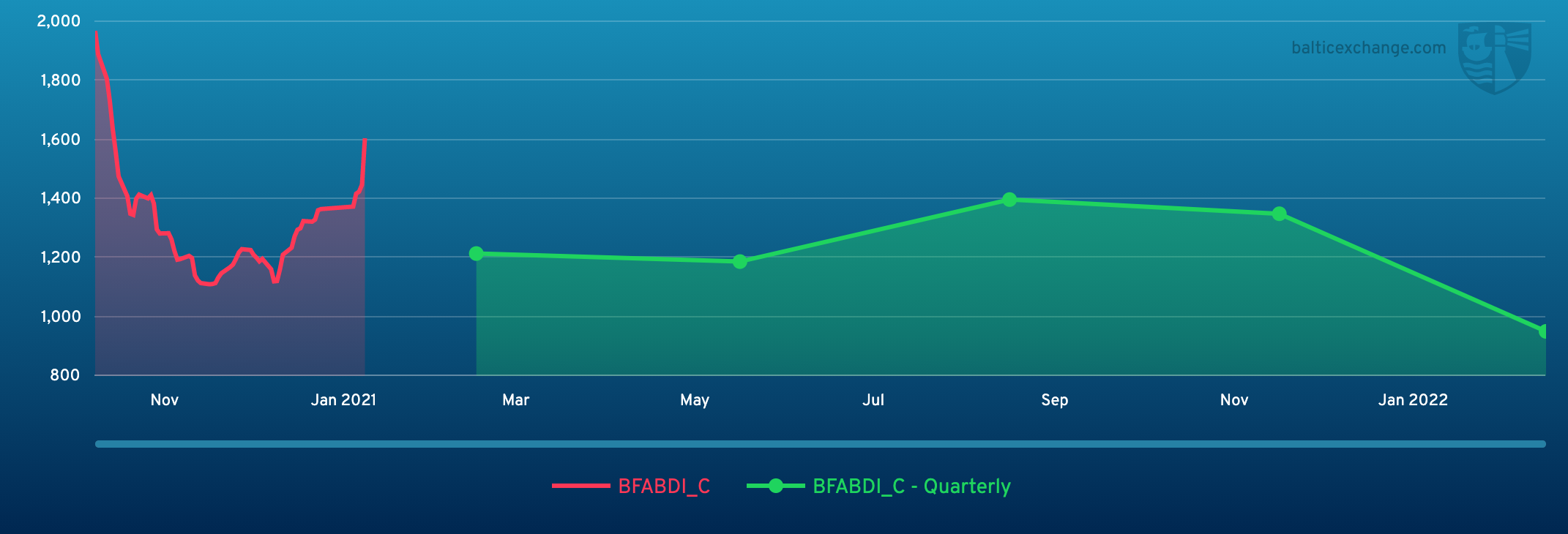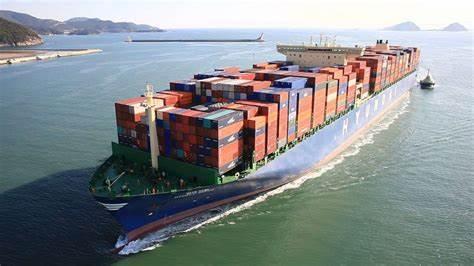BEIJING, Jan. 12 (Xinhua) -- The Baltic Exchange has published its weekly report of the dry and tanker markets for January 4-8, 2020 as below:
Capesize
The market has surely surprised many this week after sparking into life and quickly surpassing levels seen in November and December 2020. The Capesize 5TC ended 2020 at $16,633 and now closes out its opening week of 2021 at a resounding $21,131. Activity heated up from the middle of the week before exploding higher on Friday off the back of a heated Brazilian market. While major charterer Vale was said to be absent, rates have climbed quickly on prompter requirements scrambling to cover. Brazil to China C3 settled at up $1.645 to $17.33 to end the week. The ballaster line-up is lean, but not overly so. Additional pressure is thought to have been exerted on the market by expectations for this year, manifesting in an elevated derivatives forward curve. In the Pacific, fixing activity was heard to be mild ending out the week, yet rates still surged with poor weather in China cited to be affecting vessel schedules. The West Australia to China C5 settled at the end of the week up $0.491 at $9.336.
Panamax
Historically, the first working week back after holidays tended to be a passive affair - but this week has completely bucked that trend. EC South America led the drive in the Atlantic with robust demand for first half February arrivals with talk of well in excess of 30 vessels fixed from the market in recent days and likely more. Healthy demand elsewhere in the Atlantic, pitched opposite a tight tonnage supply, compelled to add support to rates. In early week trading, 82,000dwt delivery Singapore were achieving figures in the $12,500 region for trips via EC South America to the Far East. This then improved closer to $14,000. Trading early part of the week in Asia was slow, but by midweek had improved considerably with solid demand appearing. From Indonesia an 82,000dwt delivery China fixed at $10,750 for an Indonesian coal run. But by end of the week the mean rate was in excess of $12,000.
Ultramax/Supramax
The first week of 2021 was a mixed bag with a slow start. But as the week came to an end, activity levels were increasing. The Atlantic saw demand remain from the Continent, a 56,000dwt fixing a trip from the Baltic to India in the low $20,000s. As the week closed, the US Gulf was finely balanced with a 58,000dwt fixing two laden legs with minimum duration of 70 days redelivery Singapore-Japan at $20,000. Further south from south America, with demand seemingly increasing, a 58,000dwt reached the upper $13,000’s plus upper $300,000’s ballast bonus for fronthaul trips. The Asian arena saw better levels, a 61,000dwt open Vietnam fixing a trip via Indonesia redelivery Thailand at $12,500. Whilst a 52,000dwt open China fixed a trip via Indonesia redelivery China at $9,500. The Indian Ocean remained steady, a 61,000dwt fixing delivery east coast India for a trip to China at $14,000. All eyes are firmly fixed on the upcoming week.
Handysize
It was a slow week overall to begin the year with. Most of the Atlantic routes remained in the negative zone, with decline in the Continent being evident compared with the Christmas period. Meanwhile, east coast South America showed no signs of improvement whilst a large number of ships were reportedly stuck in Argentina due to the strike. In the US Gulf, the wide spread between owners and charterers' ideas continued. But it was also suggested that more fresh cargoes were expected to come out to the Gulf market. Minimal changes were reported from the Pacific, with brokers expecting it to maintain a healthy cargo list with relatively tight tonnage supply. On the period front, a 38,000dwt open Brownsville mid-January was fixed for three to five months at $12,500 with redelivery in the Atlantic.
VLCC
A relatively quiet start to 2021. On the new 2021 Worldscale schedule, flat rates fell about 17%. To compensate, fixing rates reflected an upward adjustment on the first working day of the year, but have since eased. In the Middle East, 280,000mt to US Gulf via the Cape/Cape routing is assessed almost a point down at WS21 level, while 270,000mt to China is rated two points lower since Monday at WS40.5. In the Atlantic, rates for 260,000mt West Africa to China fell three points to WS38. For voyages of 270,000mt US Gulf to China the rate has reduced $200k to $4.68m.
Suezmax
In the 135,000mt Black Sea/Med market, rates seemed to plateau at WS59 level. Meanwhile, for 130,000mt Nigeria/UK Continent they fell back 3.5 points to WS37.5-38 region. In the Middle East market, 140,000mt Basrah/Med voyages remain at WS11.5 despite the approximate 16% fall in the 2021 WS flat rate.
Aframax
Rates for 80,000mt Ceyhan/Lavera remain steady around the WS70 level, whilst in Northern Europe voyages of 80,000mt cross-North Sea continue to hover around the WS81.5 level and 100,000mt Baltic/UK-Continent saw rates 1.5 points lower at a shade over WS60. On the other side of the Atlantic, rates for 70,000mt Carib to US Gulf are flat at WS90 level and the 70,000mt US Gulf to UK Continent market saw rates weaken eight points to around WS77.
Clean
There has been little to cheer for owners at the start of the New Year. Significantly lower 2021 flat rates, combined with higher bunker costs, have left owners struggling to maintain even modest TCE’s. In the Middle East Gulf/Japan trade, rates have remained under pressure with rates for 75,000mt hovering around WS80. On the LR1s, a heavily over-populated list has seen rates slide around 15 points to sit now in the region of WS85. The MR market saw rates for 35,000mt AG/East Africa gaining around four points to just below WS150. In the Atlantic trade, the second half of the week saw plenty of fresh enquiry for both transatlantic and West Africa discharge. Owners were able to capitalise here with 37,000mt UKContinent/USAC now paying around WS110, up from the high WS80s at the start of the week. The backhaul trip of 38,000mt from US Gulf to UKContinent, however, fared less well. It eased over 15 points to low WS70s, while the 38,000mt US Gulf to Brazil run lost five points plus to settle at just above WS105 region. In the 30,000mt cross-Mediterranean trade, rates were flat at close to WS90.
Headquartered in London and a subsidiary of the Singapore Exchange (SGX), the Baltic Exchange publishes a range of indices and assessments which provide an accurate and independent benchmark of the cost of transporting commodities and goods by sea. These include the Baltic Dry Index (BDI), the dry bulk shipping industry's best known indicator. Published daily since 1985, this provides a snapshot of the daily spot market earnings of capesize, panamax and supramax vessel types on the world's key trading routes.

Chart shows Baltic Dry Index (BDI) during Jan.9, 2020 to Jan.8, 2021

Baltic Forward Assessment for BDI
In March 2018 the BDI was re-weighted and is published using the following ratios of timecharter assessments: 40 percent capesize, 30 percent panamax and 30 percent supramax. The information is provided by a panel of international shipbrokers.
(Source: The Baltic Exchange, edited by Niu Huizhe with Xinhua Silk Road, niuhuizhe@xinhua.org)




 A single purchase
A single purchase









